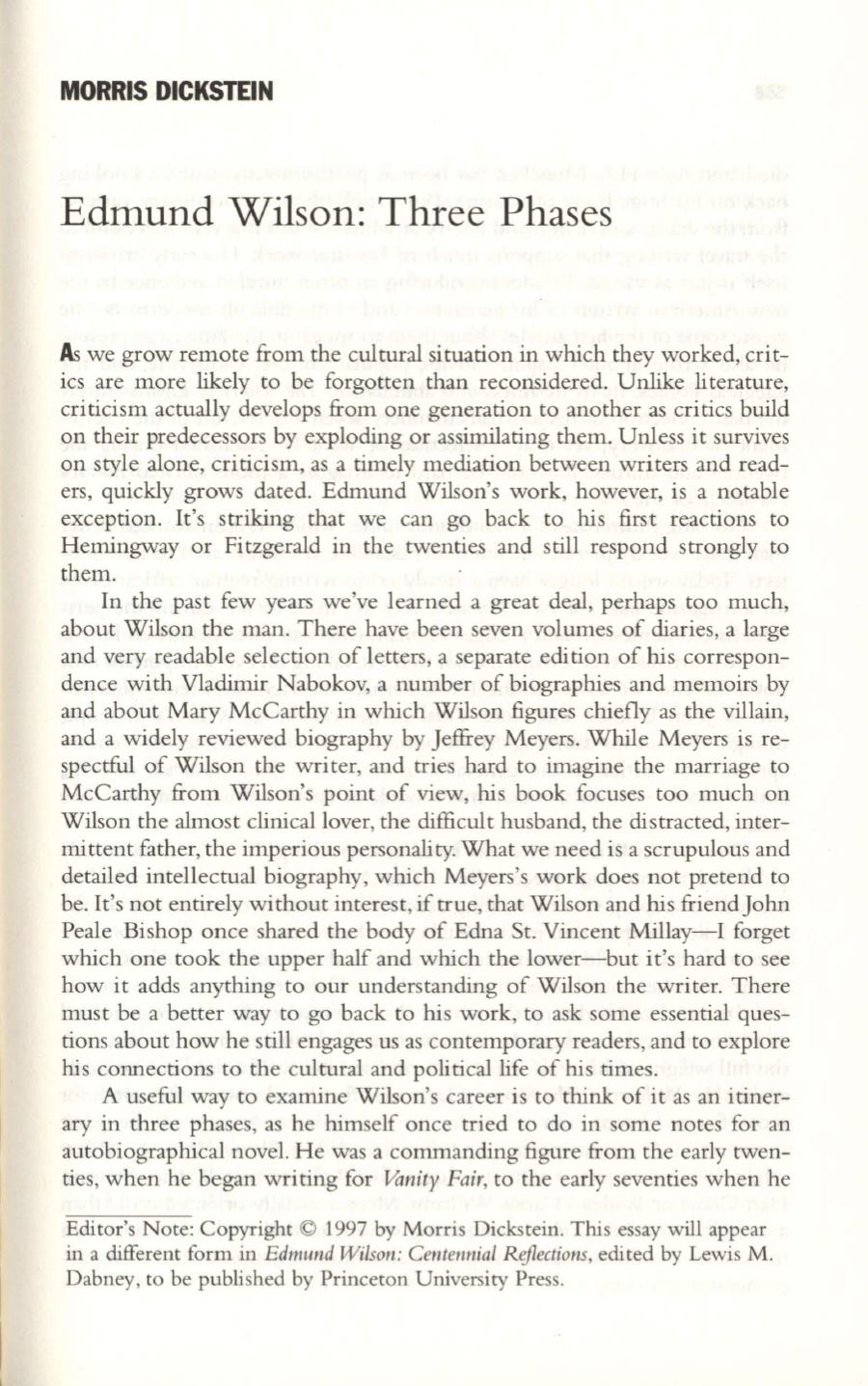
MORRIS DICKSTEIN
Edmund Wilson: Three Phases
As
we grow remote from the cultural situation in which they worked, crit–
ics are more likely to be forgotten than reconsidered. Unlike literature,
criticism actually develops from one generation to another as critics build
on their predecessors by exploding or assimilating them. Unless it survives
on style alone, criticism, as a timely mediation between writers and read–
ers, quickly grows dated. Edmund Wilson's work, however, is a notable
exception. It's striking that we can go back to his first reactions to
Hemingway or Fitzgerald in the twenties and still respond strongly to
them.
In the past few years we've learned a great deal, perhaps too much,
about Wilson the man. There have been seven volumes of diaries, a large
and very readable selection of letters, a separate edition of his correspon–
dence with Vladimir Nabokov, a number of biographies and memoirs by
and about Mary McCarthy in which Wilson figures chiefly as the villain,
and a widely reviewed biography by Jeffiey Meyers. While Meyers is re–
spectful of Wilson the wri ter, and tries hard to imagine the marriage to
McCarthy from Wilson's point of view, his book focuses too much on
Wilson the almost clinical lover, the difficult husband, the distracted, inter–
mittent father, the imperious personality. What we need is a scrupulous and
detailed intellectual biography, which Meyers's work does not pretend to
be. It's not entirely without interest, if true, that Wilson and his friend John
Peale Bishop once shared the body of Edna St. Vincent Millay-I forget
which one took the upper half and which the lower-but it's hard to see
how it adds anything to our understanding of Wilson the writer. There
must be a better way to go back to his work, to ask some essential ques–
tions about how he still engages us as contemporary readers, and to explore
his connections to the cultural and political life of his times.
A useful way to examine Wilson's career is to think of it as an itiner–
ary in three phases, as he himself once tried to do in some notes for an
autobiographical novel. He was a commanding figure from the early twen–
ties, when he began writing for
vanity Fair,
to the early seventies when he
Editor's Note: Copyright
©
1997 by Morris Dickstein. This essay will appear
in a different form in
Edmund WiLson: Centmniai
R~ections,
edited by Lewis M.
Dabney, to be published by Princeton University Press.


